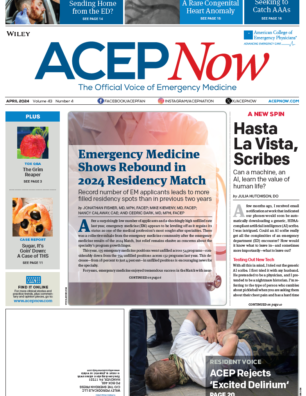Question 1: Are routine blood cultures indicated in patients admitted with CAP?
Explore This Issue
ACEP News: Vol 28 – No 11 – November 2009Core measures include two expectations in regard to blood cultures. First, if blood cultures are drawn in the emergency department, they should be drawn prior to administration of antibiotics. Second, blood cultures should be drawn within a 24-hour window before or after transfer or admission to the ICU, if transfer occurs during the first 24 hours of admission. There are few available data to support using blood cultures to manage CAP. Studies reviewed revealed that they are infrequently positive (1%-16%) and infrequently lead to change in management (0%-5%), especially in low-risk patients.
- Level A recommendation. None specified.
- Level B recommendation. Do not routinely obtain blood cultures in patients admitted with CAP.
- Level C recommendation. Consider obtaining blood cultures in higher-risk patients admitted with CAP (e.g., severe disease, immunocompromise, significant comorbidities, or other risk factors for infection with resistant organisms).
Question 2: In adult patients with CAP without severe sepsis, is there a benefit in mortality or morbidity from the administration of antibiotics within a specific time course?
Quality and performance measures outline door-to-antibiotic cutoffs theoretically designed to improve morbidity and mortality outcomes for CAP. The actual benefits of these strict timelines have been questioned by recent studies.
- Level A recommendation. None specified.
- Level B recommendation. There is insufficient evidence to establish a benefit in mortality or morbidity from antibiotics administered less than 4, 6, or 8 hours from emergency department arrival.
- Level C recommendation. Administer antibiotics as soon as feasible once the diagnosis of CAP is established; there is insufficient evidence to establish a benefit in morbidity or mortality from antibiotics administered within any specific time course.
There is insufficient evidence to dictate a specific time interval for antibiotic administration in patients diagnosed with CAP in the emergency department. In the non-critically ill patient, emergency physicians would be prudent to administer antibiotics as early as possible after a definitive diagnosis is made. Future prospective studies may determine a specific time interval within which antibiotics should be given to improve morbidity or mortality. n
Dr. Jacobson is the chief resident of emergency medicine at Mt. Sinai School of Medicine, New York, N.Y. Dr. Nazarian is assistant clinical professor of emergency medicine at Mt. Sinai School of Medicine/Elmhurst Hospital Center, New York, N.Y., and is a member of ACEP’s Clinical Policies Committee.
Pages: 1 2 3 | Single Page


No Responses to “ACEP Clinical Policy: Critical Issues in the Management Of Adult Patients With Community-Acquired Pneumonia”